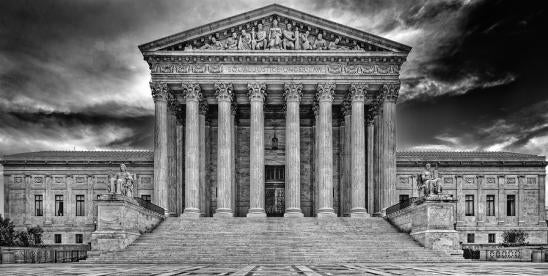The Supreme Court of the United States traced two centuries of analysis related to enhanced damages in patent cases to conclude that the US Court of Appeals for the Federal Circuit’s two-part test, announced nearly a decade ago in In re Seagate, was unduly rigid and impermissibly constrained a district court’s discretion. Halo Electronics, Inc. v. Pulse Electronics, Inc., et al., Case No. 14-1513 (June 13, 2016) (Roberts, CJ); Stryker Corp. v. Zimmer, Inc., Case No. 14-1520 (June 13, 2016) (Roberts, CJ). Because the pertinent language of 35 USC § 284 contains no explicit limit on when enhanced damages are appropriate for willful infringement, going forward it will be for district courts to determine, based on the particular circumstances of each case, whether an infringing party’s conduct is sufficiently egregious to award enhanced damages.
Background
Both cases before the Supreme Court were decided under theSeagate framework at the Federal Circuit. In both instances, the petitioner proved infringement of a valid patent but was ultimately denied enhanced damages. In the appeal between Halo Electronics and Pulse Electronics, the district court declined to award enhanced damages, and the Federal Circuit affirmed. In the appeal between Stryker and Zimmer, the district court trebled the amount of damages, but the Federal Circuit set aside the enhanced damages award based on a de novo determination that the defendant’s defenses at trial were objectively reasonable. The Supreme Court granted certiorari in both cases to assess whether the two-part Seagate framework was consistent with § 284 (IP Update, Vol. 18, No. 10).
The Unanimous Supreme Court Opinion
Since 2007, the Federal Circuit and the district courts have applied a two-part test to establish whether infringement of a patent was willful, evaluating (1) whether the infringer acted despite an objectively high likelihood that its actions constituted infringement of a valid patent, and (2) whether the risk of infringement was either known or so obvious that it should have been known to the accused infringer.
Beginning with the plain language of the statute, the Supreme Court found no limit or condition in § 284 that supported the test the Federal Circuit had adopted. Rather, the Supreme Court focused on the word “may” and its connotation of discretion. The Supreme Court declined to impose a “precise rule or formula” on district courts considering enhanced damages, but instructed that a district court’s discretion should be exercised on a case-by-case basis.
The opinion went on to explain that in a typical patent infringement case, enhanced damages are not appropriate. Rather, such an award is to be reserved for conduct that is “characteristic of a pirate” or “willful, wanton, malicious, bad-faith, deliberate, consciously wrongful, flagrant.” In essence, a district court’s aim in enhancing damages is to fashion a punitive sanction for egregious infringement behavior. The degree of culpability, however, should be measured at the time of the challenged conduct.
The Supreme Court’s reasoning relied heavily on its earlier interpretation of 35 USC § 285 (awarding attorneys’ fees for an exceptional case) in Octane Fitness, LLC v. ICON Health & Fitness, Inc. (IP Update, Vol. 17, No. 5). As it did in Octane Fitness, the Supreme Court rejected the clear and convincing evidence standard, explaining that willful infringement need only be shown by a preponderance of the evidence. Likewise, because enhanced damages (such as an award of attorneys’ fees) are subject to a district court’s discretion, going forward an award of enhanced damages will be reviewed on appeal for an abuse of discretion.
While respondents raised concerns regarding the interplay of unlimited discretion to award treble damages and the leverage of patent holders to exact outsized licensing fees, the Supreme Court cautioned district courts to strike a balance. District courts need not award enhanced damages in “garden variety cases,” but the need for strong patent protection to promote innovation justifies a looser construct than the Seagate framework.
The Concurrence
In concurrence, Justice Breyer set forth his own understanding of the Court’s opinion. He was joined by Justices Kennedy and Alito. The concurrence emphasized that willful misconduct is not a situation where the infringer knew about the asserted patent and nothing more. Because of the punitive nature of enhanced damages, the evidence must demonstrate a difference between knowledge of a patent and intentional infringement.
Practice Note: In the wake of the Supreme Court’s decisions inHalo- Stryker , it remanded two patent cases in which cert was pending back to the Federal Circuit for reconsideration in view ofHalo. The cases are Innovention Toys, LLC v. MGA Entertainment, et al., Case No. 15-635 and WesternGeco LLC v. ION Geophysical Corporation, Case No. 15-1085.



 i
i

